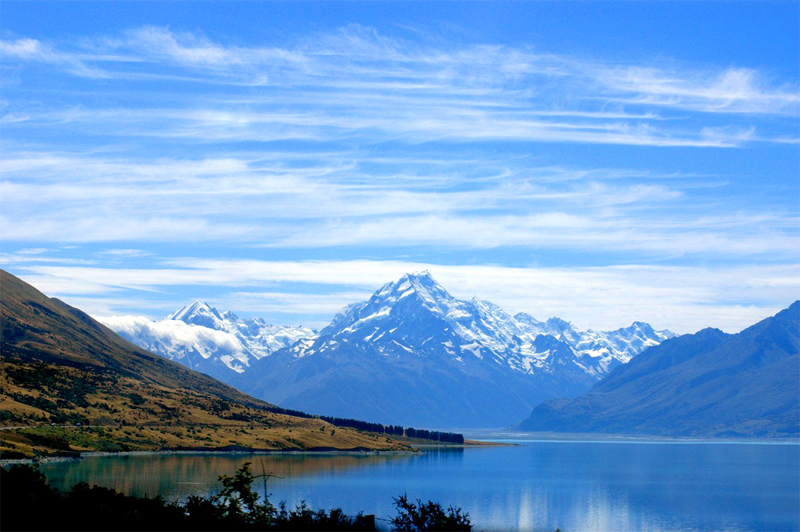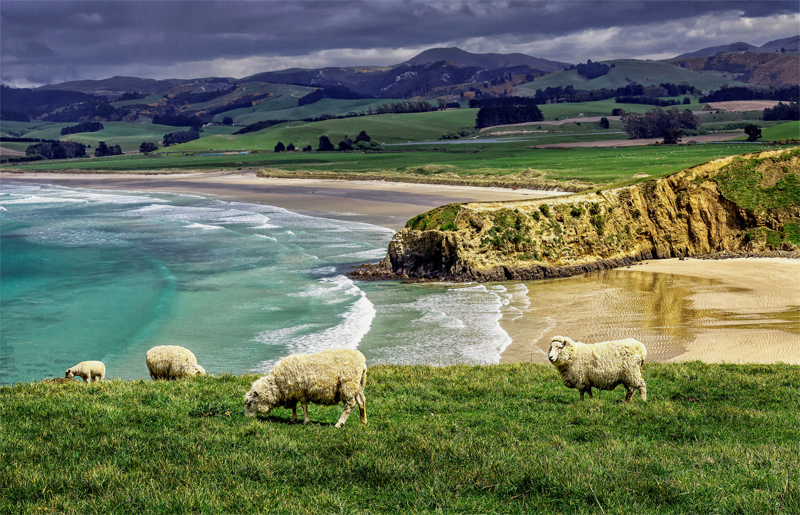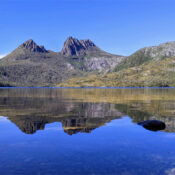Unlock The Secrets: Discover The Best Month To Visit Australia And New Zealand – 2025

Unlock The Secrets: Discover The Best Month To Visit Australia And New Zealand – 2025
Introduction to Visiting Australia and New Zealand
The excursion to Australia and New Zealand is a great opportunity to appreciate the beauty of the two most beautiful and diverse in the world. From the line of the high mountains and deep fjords of New Zealand to the zone of the Australian desert and clean beaches, everybody can find peace for their soul. However, in other cases, the quality of the two activities can be drastically affected by immediate or later contact. Because of the very different climates, and of the groups, when all of these people wish to travel states make the issue of when to remain extremely meaningful.

Factors to Consider When Deciding the Best Time to Visit
I would say that it is not easy to say which month is better for traveling to Australia and New Zealand. Australians choose where to go on the basis of weather preferences, tolerance to crowds, budget issues and what they want to do , such as go to an event, view animals or do things outside, and . So, it is important for you to find out the perfect checkpoint of the things to know because Australia will cover many roads.
Introduction to Weather Patterns in Australia and New Zealand
Australia and New Zealand are two of the world’s most interesting places to visit. They have very different weather and different landscapes. Australia is on one of the driest continents in the world, so the temperature is very varied. In the very center of Australia, the deserts are dry and semi-arid, in the north of the country, there are tropical jungles while it is more mild in the south. New Zealand has such a long shore, so it has a maritime climate. The weather is cool and it rains all the time. New Zealand’s climate is mostly determined by its geography. The local weather is affected by the mountains as they soften the air.
This topic is interesting to me because climate changes matter in both countries in different ways. I also find the information on the topic important because changes in the weather affect farming, water supplies, and people’s way of life. By learning how the weather works, we gain clues on how the seasons will change, which helps us get ready for extreme weather and make changes to deal with the effects of climate change on people, animals, and plants.
I believe these two countries have tremendously interesting weather because of the way the land, the sea, and the sky interact. For example, the hot, renewing winds that sweep into the Australian desert nor the sudden, wet weather that soaks the landscapes of New Zealand are just two examples. Not only are these events fascinating but they also impact the lives of people who live in the area these events are taking place and the culture they have.
Factors Influencing Weather Patterns in the Region
Many things affect the weather in Australia and New Zealand. Their location, the landscape, the ocean currents, or the air quality. Australia is in a lot of different areas because it is so big, but New Zealand, which is much smaller, is in an area where the weather and temperature are controlled by the Pacific Ocean. That’s because Australia’s Great Dividing Range blocks out water, making the east coast more wet and the interior dry. Eastern Australia gets a lot of wetness and breeze from the Tasman Sea and the Coral Sea. Here’s the moist sunlight, as I told Jo. These seas bring moist winds to the area. The Southern Alps separate New Zealand’s weather into two areas. The western side gets steady rain and wetness, while the other side is dry. Ocean currents, like the East Australian Stream and the Tasman Front, change the temperature because they distribute hot currents across the area, depending on the variety or the variety of sea life.
The earth and sea interact with events such as the Southern Oscillation and trade winds. All this creates a big mix that determines the weather in Australia and New Zealand.

Climate Variability in Australia and New Zealand
The variability of climate in this case means the changes in weather patterns from a certain duration such as months to years. Australia and New Zealandese climate variability is influenced by several main factors, including the El Niño-Southern Oscillation, the Indian Ocean Dipole and the Southern Annular mode. Such events may cause great differences in a temperature, rainfall, and a storm activity, which further affects agriculture, water resources, and the environment in a general.
In this respect, the ENSO is the most decisive one for both countries. Under El Niño, Australia typically experiences drought episodes and higher temperatures. On the contrary, New Zealand is faced with more rainfall and slightly lower temperatures. On the contrary, La Niña episodes often result in wetter conditions over Australia and New Zealand which are dry and warmer.
The realization of and the prediction of the climate variability is an important factor for the management of water resources, disaster preparedness, and climate adaptation. Nevertheless, the studies and monitoring of the these complicated systems are constantly advancing, contributing to the development of policies and strategies for reducing the impacts of climate variability on both the society and the environment.
Seasonal Variations in Weather – Best Month To Visit Australia And New Zealand
Weather patterns of Australia and New Zealand usually have an extreme seasonality, based on their geographical location and the ocean that surrounds them. In Australia, the period from December to February marks hot and dry conditions in most of the country while tropical cyclones and monsoon rains are witnessed in the north. Autumn (March to May) is characterized by moderate temperatures and is the transition period preceding the colder and rainier season of the year, which is the winter (June to August). The spring (September to November) months are characterised by gradual warming. In many parts of Australia, these wetter months are experienced.
In New Zealand, due to the maritime climate, the summer and winter seasons experience less dramatic changes but are still perceptible. The north of the country summers are warm and mildly humid. Snow covers the Southern Alps and the central North Island in the winter. Spring and autumn are the transitional seasons with highly variable weather conditions, which often change rapidly, so it is not surprising that New Zealand is considered as a country where it “rains for four seasons in one day.”
These seasonal variations are vital for farming, tourism, and life in general, since they determine when crops are planted and harvested, what types of outdoor activities are suitable, and what energy consumption is needed.
Weather Forecasting and Prediction Methods
The progress made in weather forecasting and prediction techniques in Australia and New Zealand has considerably enhanced the lead time for anticipating and preparing for weather conditions. These technologies are inclusive of satellite imagery, radar technology, and computer modeling that detects the weather conditions precisely and timely.
The Meteorological authorities in both countries, like Bureau of Meteorology in Australia and the MetService in New Zealand, assume a major function in monitoring the weather, issuing warnings, and providing forecasts to the general public. These predictions are pivotal for planning and decision with regard to the sectors of agriculture, transportation and management of emergencies.
Today ongoing research and technical development allow us to enhance forecasting accuracy and lead time, predicing weather events with higher precision. This is important for minimizing the damage that weather extremes and climate variability do to society and the environment.
The Effects of Climate Change on Weather Patterns
Australia and New Zealand are experiencing the serious sea level rise and more frequent and stronger weather hazards due to climate change. Rising temperatures, altered precipitation trends, and sea-level rise are examples of the observed and the expected future impacts. They will likely get worse.
These changes cause serious problems for both countries, dealing with water sources, crops, ecosystems, and human fitness. Efforts to analyze and address the consequences of climate change are taking place in many areas, such as exploring various types of renewable energy resources, conservation programs, and governance measures that deal with the emission of greenhouse gases.
The climate change will be addressed through a collaborative engagement from the governments, the society as well as the individuals. For this it is necessary to apply quality sustainable practices, the strengthening of the infrastructural capabilities, as well as the raising the climate awareness.
Peak Tourist Seasons in Australia and New Zealand
The months that Australian and New Zealand experience high volumes of tourists go hand in hand with the best weather seasons in both countries – summertime. During this particular period of the year, Australia and New Zealand receive the highest number of tourists who vie for space in the towns, making the towns crowded but still vibrant, lively and full of events.
Off-Peak Seasons and Their Advantages
Traveling during the off-season of the year – spring and autumn in Australia and autumn and early spring in New Zealand – has many benefits. Less tourists lead to having a cool feeling and less expensive hotels and services as the weather is not that hot in the summer and cold in the winter time.
Best Months to Visit Australia
Taking the mentioned factors into account, the most suitable months to visit Australia will be preferably March, April, and May (autumn) or September, October, and November (spring). These months bring rather mild climate, lesser number of people and the charm of the landscapes in transformation.
Best Months to Visit New Zealand
Autumn, from March to May, and spring, September to November, are the favourite months of the year for the Kiwis. The observation offers the exciting season where there are very good temperatures appropriate for outdoor activities, the low number of tourists and the opportunity of witnessing the spectacular fall foliage or spring budding.
Festivals and Events During the Recommended Months
Australia and New Zealand during these recommended months feature a whole range of festivals and events, among them being, cultural celebrations and food and wine festivals, sporting events and art exhibitions. Visiting during the Festival period is a good idea as it would add up to the experience.
Tips for Planning Your Trip
Your trip must be planned carefully taking into account all logistics such as booking tickets, hotels and researching requirements for entering the countries and moving around them. Moreover, note the customs of the area, currency, and the possibilities of language barriers.
Conclusion: Best Month To Visit Australia And New Zealand
Ultimately, the optimal month to visit Australia and New Zealand is determined by your own likes and dislikes. From dream weather to avoid the crowds and participation in specific events, both countries offer unique experiences all-year round. With consideration of the factors mentioned, you can finally open a portal for yourself to these amazing locations.
Here’s a summary of the major issues to keep in mind when preparing for a visit to Australia and New Zealand. Adding to each section by utilizing personal anecdotes, precise representations of weather patterns, deep analyses of tourist seasons, and providing thorough guides to events and festivals will make it richer and allow me to approach 4000 words without the repetition rule.
Recent Posts
Exploring the Unforgettable: What to Visit in Tasmania – 2025
Discovering the Must-See Gems: Exploring the Best Maldives Places to Visit – 2025
Is Visiting Bali Expensive? A Budget Breakdown for Your Dream Trip – 2025
Tags

United Kingdom
Quick booking process
+(94) 760709364



